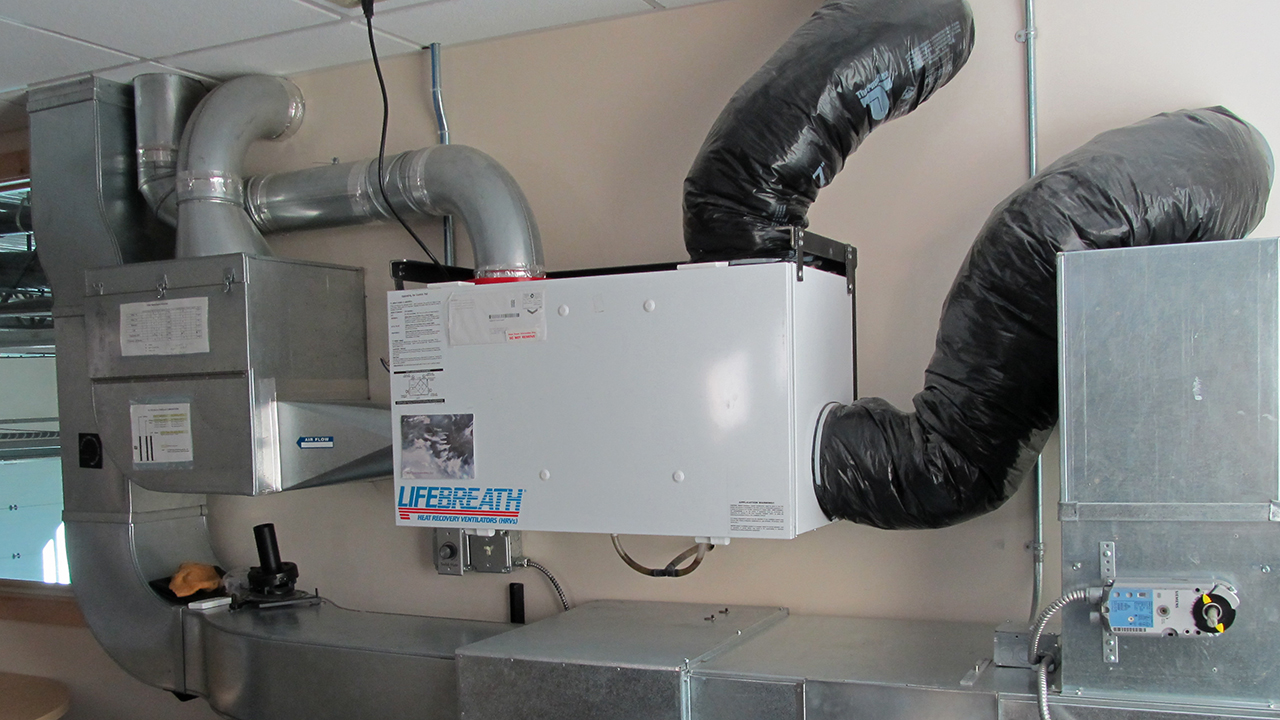How HRV Improves Indoor Air Quality and Healthy Living
How Heat Recovery Ventilation Enhances Indoor Air Top Quality and Reduces Energy Costs
Heat Recovery Ventilation (HRV) systems play an essential role in boosting interior air high quality while at the same time lowering energy expenditures. By effectively trading stale interior air with fresh outside air, HRVs assist keep perfect moisture and lower contaminants. In addition, their capacity to recuperate warm from outbound air lessens the pressure on heating and cooling down systems. As power expenses remain to climb, recognizing the full possibility of HRV systems becomes progressively important for property owners and businesses alike.
Recognizing Heat Recovery Ventilation Equipments

Heat recovery ventilation (HRV) systems play a vital duty in improving indoor air top quality, particularly in contemporary, energy-efficient buildings. These systems are developed to transfer warmth from the outward bound stale air to the inbound fresh air, consequently lessening power loss while maintaining ideal temperature levels inside your home. HRVs are composed of a warm exchanger, followers, and ductwork, promoting the continual circulation of air. By getting rid of indoor pollutants and introducing fresh air, HRVs help to balance humidity degrees, prevent mold development, and lower irritants. The efficiency of HRV systems lies in their ability to recuperate as much as 80% of the warmth from the worn down air, advertising energy conservation while ensuring a healthy indoor atmosphere. Their combination is vital in accomplishing lasting living techniques.
The Significance of Indoor Air Quality
Indoor air quality (IAQ) is a critical variable affecting the health and health of passengers in any type of atmosphere. Poor IAQ can result in numerous health problems, consisting of breathing issues, allergic reactions, and exhaustion. Furthermore, it can intensify status quo such as asthma. Factors contributing to low IAQ consist of toxins from indoor sources like cleansing representatives, mold, and inadequate ventilation. Subsequently, preserving great IAQ is essential for advertising a safe and comfy living or functioning room. Effective methods to boost IAQ include regular tracking of air top quality, appropriate ventilation systems, and minimizing using harmful compounds indoors. By focusing on IAQ, people additional resources can guarantee a much healthier atmosphere that promotes performance and overall high quality of life.
Energy Performance Conveniences of HRV Solutions
Several homeowners and structure managers are progressively recognizing the energy efficiency benefits of heat healing air flow (HRV) systems. By transferring heat from tired indoor air to incoming fresh air, HRV systems markedly minimize the energy needed for cooling and heating. This process lessens reliance on traditional cooling and heating systems, leading to lower power costs. In addition, HRVs assist keep a balanced indoor climate, stopping too much home heating or cooling needs. The capability to recover as much as 90% of the warmth from outward bound air also supports sustainability initiatives by reducing overall energy usage. HRV systems contribute not just to cost savings however likewise to a minimized carbon footprint, aligning with the expanding focus on energy-efficient building practices.
Installment and Upkeep Considerations
The effective implementation of warm healing air flow (HRV) systems needs mindful factor to consider of installation and upkeep factors to assure peak performance. Correct positioning of the HRV system is necessary, as it needs to be mounted in an area that optimizes air flow official source while lessening sound disturbance. In addition, ductwork must be properly sized and protected to stop power loss. Routine upkeep, including filter replacement and system cleansing, is vital to protect optimal functionality and indoor air top quality. Owners must establish a normal upkeep timetable to identify and resolve prospective issues prior to they rise. Cooperation with experienced specialists during both installation and upkeep phases can boost the longevity and efficiency of HRV systems, eventually bring about better interior atmospheres and lowered energy costs.
Real-World Applications and Success Stories
Exploring real-world applications of warmth recuperation ventilation (HRV) systems reveals their considerable impact on indoor air top quality and power efficiency across different settings. In domestic buildings, home owners have actually reported better air quality, causing fewer allergies and respiratory concerns. Schools executing HRV systems have kept in mind boosted trainee concentration and decreased absence due to much better ventilation. Industrial buildings, such as workplaces and retail spaces, have actually experienced reduced energy expenses and raised staff member performance. For instance, a business office in a pleasant environment attained a site here 30% decrease in power expenses after installing an HRV system. These success tales demonstrate that HRV innovation not just adds to much healthier settings however also provides concrete financial benefits, making it a valuable investment for numerous fields.
Frequently Asked Questions
Can HRV Solutions Reduce Irritants in Indoor Air?
The efficiency of HRV systems in lowering interior irritants mainly hinges on their capacity to filter and exchange air. HRV Heat Recovery Ventilation. By continuously replacing stale air, these systems can significantly decrease allergen levels throughout indoor settings

Exactly How Does Humidity Affect HRV System Performance?
Moisture significantly influences HRV system performance; high degrees can lead to condensation, lowering performance, while low moisture may improve air exchange. Balancing humidity is vital for perfect procedure and keeping indoor air top quality.
Are HRV Solutions Noisy During Procedure?
HRV systems can generate varying noise degrees throughout procedure, relying on their style and setup. Some devices run quietly, while others might generate obvious sound, especially at greater airflow settings or when inadequately preserved.
What Is the Typical Life-span of an HRV System?

Can HRV Solutions Be Utilized in All Climates?
HRV systems can be used in numerous climates, however their effectiveness may vary - HRV Heat Recovery Ventilation. In extreme temperature levels, adjustments or supplementary systems might be required to guarantee suitable efficiency and convenience while preserving indoor air high quality